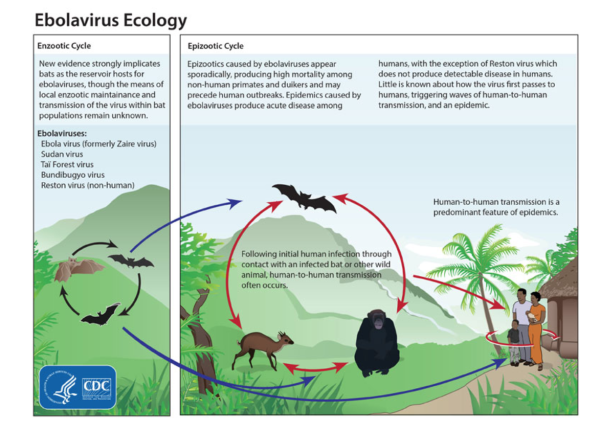Ebola
CDC Definition 2014
Ebola hemorrhagic fever (Ebola HF) is one of numerous Viral Hemorrhagic Fevers. It is a severe, often fatal disease in humans and nonhuman primates (such as monkeys, gorillas, and chimpanzees).
Ebola HF is caused by infection with a virus of the genus Ebolavirus. When infection occurs, symptoms usually begin abruptly. The first Ebolavirus species was discovered in 1976 in what is now the Democratic Republic of the Congo near the Ebola River. Since then, outbreaks have appeared sporadically.
There are five identified subspecies of Ebolavirus. Four of the five have caused disease in humans: Ebola virus (Zaire ebolavirus); Sudan virus (Sudan ebolavirus); Taï Forest virus (Taï Forest ebolavirus, formerly Côte d’Ivoire ebolavirus); and Bundibugyo virus (Bundibugyo ebolavirus). The fifth, Reston virus (Reston ebolavirus), has caused disease in nonhuman primates, but not in humans.
The natural reservoir host of ebolaviruses remains unknown. However, on the basis of available evidence and the nature of similar viruses, researchers believe that the virus is zoonotic (animal-borne) with bats being the most likely reservoir. Four of the five subtypes occur in an animal host native to Africa.
A host of similar species is probably associated with Reston virus, which was isolated from infected cynomolgous monkeys imported to the United States and Italy from the Philippines. Several workers in the Philippines and in US holding facility outbreaks became infected with the virus, but did not become ill. 1)
Johns Hopkins Symptoms & Treatment
Ebola is a virus that causes problems with how your blood clots. It is known as a hemorrhagic fever virus. This is because the clotting problems lead to internal bleeding, as blood leaks from small blood vessels in your body. The virus also causes inflammation and tissue damage. Five different species of the virus have been found.
Ebola is spread through direct contact with body fluids of people infected with it. These fluids are blood, saliva, sweat, tears, mucus, vomit, feces, breast milk, urine, and semen. It is also spread by touching things that have been contaminated with these fluids.
Ebola is hard to treat, and may cause death in an average of about 10 days from the start of symptoms. What are the symptoms of Ebola?
Symptoms of Ebola can start 2 to 21 days after being infected by the virus. They most often start about 8 to 10 days after being exposed to the virus. The first symptoms are similar to the flu.
After recovering from Ebola, you may have body aches and weakness for weeks or months. Ebola can last in semen for at least 3 months after recovery. A man should use a condom, or not have sex. Women should not breastfeed until talking with their doctor. A person who has recovered from Ebola may be immune for at least ten years or longer. It is not known if this includes immunity to all species of the virus. 2)

